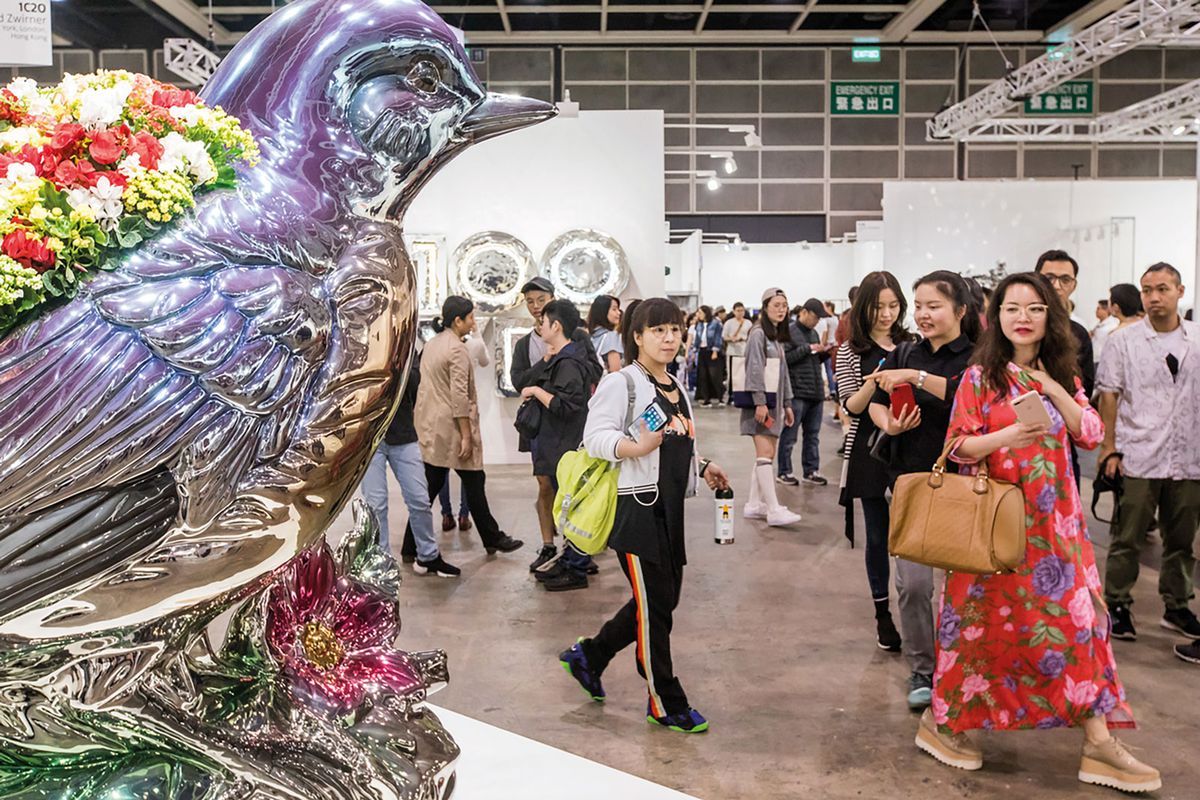Two new art fairs launching this spring in mainland China are adding to a growing roster. Every second-tier Chinese city now wants its own fair, biennale and museum, and they are often indifferent to whether they are also second-tier in calibre. But a few aim to be major players, including the two newcomers: Art Chengdu International Contemporary Art Fair (25-27 April), mounted by the collector Huang Yu and the former Harper’s Bazaar Art China project director Huang Zai in Sichuan’s capital, and JingArt (17-20 May) in Beijing, organised by the founders of the Shanghai fair Art021.
In addition, Magnus Renfrew—the founding director of ArtHK, Art Basel in Hong Kong’s predecessor—will launch Taipei Dangdai next January in Taiwan, already home to a host of local fairs including Asia’s oldest contemporary art fair, Art Taipei.
Regional megolith Art Basel in Hong Kong (ABHK) estimates that last year China comprised 21% ($13.2 bn) of the global art market. With ABHK and the rising duo of Shanghai‘s West Bund and Art021 fairs in November, almost every major Chinese city now boasts its own art fair. Specialist fairs, such as Ink Asia in Hong Kong, have also emerged. Now, small and medium-sized Asian galleries face the conundrum of which to participate in—with the caveat that it is a nice problem to have.
“It is really hard to decide which fairs to attend,” says Liu Jie, who founded an art space called A Thousand Plateaus in Chengdu in 2007. After participating in ABHK, he plans to attend both Art Chengdu and JingArt this year, along with Art Shenzhen, Art021 and Loop Barcelona. He charts the explosion in art fairs back to Art Basel’s acquisition of ArtHK in 2011 and the emergence of the Shanghai powerhouses, which launched between 2013 and 2014. “Most fairs are still in the development stages, and in mainland China, for example, not many have high professional standards,” he says.
Art Chengdu, which has 31 galleries signed up, is poised to become one of the go-to fairs, reaching a rapidly developing region of China with a potentially large buying base. The co-founder Huang Zai says: “There are actually a lot of low-key collectors in Chengdu, which is not only the cultural centre of mid-west China, but also an economic centre.”
JingArt will be held at the Beijing Quanyechang arts centre near Tiananmen Square, and exhibitors so far include Hauser & Wirth, David Zwirner and Whitestone Gallery. “Our specialty will be the location and the diversity of exhibitors, artists and works—encompassing Modern and contemporary and both Asian and Western art,” says Kylie Ying, the co-founder of JingArt and Art021.
The capital is already home to several contemporary art fairs, most notably Art Beijing (29 April-2 May) and China International Gallery Exhibition, which have run respectively since 2006 and 2004. Ying says her new entrant will be on a “more elaborate scale” than the Shanghai flagship and will include “porcelain, coins, jewellery, furniture and design” along with contemporary works of art.
On the proliferation of fairs she says: “I personally would like to see ever more art galleries, museums and fairs, especially in China. But objectively it depends on how much each country and city can digest and sustain.”


